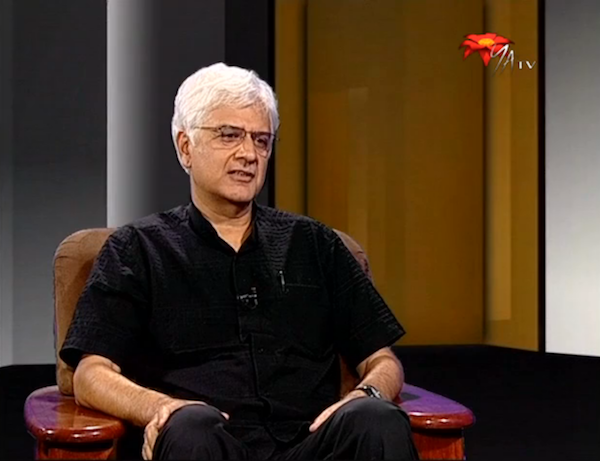
Kunda Dixit (@kundadixit), Publisher and Chief Editor of Nepali Times was in Sri Lanka recently, where we caught up for a brief conversation on the issues related to journalism in South Asia and more broadly. We began by probing why Kunda, after a Masters in Micro-Biology, switched his focus to journalism. We then talk about how Kunda realised the potential reach and power of digital media when he was, quite literally, on top of a mountain with a mobile phone.
We then discuss the impact of social media in Nepal and journalism writ large, noting in particular references to social media by Turkey’s Prime Minister after the anti-government social unrest in his country recently, the UK’s Prime Minister after riots in London a few years ago and the Sri Lankan Secretary of Defence, Gotabaya Rajapaksa’s recent pronouncement that social media in Sri Lanka is a national security threat.
We talked about the erstwhile Nepali King’s communications blackout of Nepal in 2005, and how it played out for journalists and the media at the time, including the creative ways through which real news was broadcast and published despite rampant official and self-censorship.
Kunda then talks about how content, and not the technology (app, service, platform or website) that matters the most. We go on to talk about new, indeed smarter architectures of censorship and control by the State, particularly through the ownership of institutions, and via advertising. Kunda talk about how this control needs to be identified as such, and fought against, including by greater demands from consumers of media for journalism of a higher order.
Kunda still teaches journalism and goes into why he does it, and what drives him to teach even though he flags so many challenges around the practice of journalism today. We spend some time talking about Kunda’s work with photography as a means of (re)telling the story of Nepal’s conflict, and how photojournalism in particular helps with story-telling, and the recording of narratives, including those that are deeply personal, which would otherwise have been forgotten, marginalised or erased.
This leads to an interesting exchange over how reconciliation, post-war, works in countries like Sri Lanka and Nepal which have a faith tradition that believes in reincarnation, and how photojournalism in particular, and the media more generally, can contest deeply ingrained social, political and cultural constructs that by design or inadvertently serve to perpetuate violence and protect aggressors.
Still talking about photojournalism, we exchange thoughts on the furore over the 2012 World Press Photo winner Paul Hansen’s photo [Edited from original which noted incorrectly the photo was based on composite images, pursuant to comment by a reader below]. Kunda shares his view on the digital manipulation of imagery, and what it means to media now that it can be so easily done.
Towards the end of the conversation we talk about Kunda’s environmental journalism, long before the global warming debate is anywhere close to what it is today. Kunda notes why it is vitally important for media to highlight environmental issues, which are growing in frequency, impact and complexity.
Our conversation ends by focussing on a speech made by Kunda at a graduation ceremony, and what he calls upon students to do, which is as resonant in Nepal for Nepalese as it is in Sri Lanka, for all of us.
